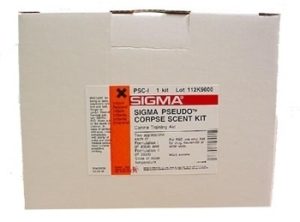With the release of another book in my hospital-based Aimee Machado Mystery series, it’s time to explore a new topic that fits into the collection of facts I’ve learned while writing fiction.
it’s time to explore a new topic that fits into the collection of facts I’ve learned while writing fiction.
This one came up while I was working on RENEWAL, book six in the series. The mystery to be solved in this case does not involve the prisoner directly. The crime that sent him to prison happened a few years earlier. Back then, Aimee was his victim, but now he has crucial information that she needs to help solve a new case. An opportunity arises when she receives a request to provide a victim impact statement at the prisoner’s parole hearing.
Again, I found myself learning fascinating facts I would not have known if I had not been writing fiction. Here’s what I discovered by visiting the California Department of Corrections website.
- The purpose of a parole hearing is to determine whether an inmate should be released on parole. (Okay, this one is pretty obvious.)
- Only adult inmates sentenced to life in prison with the possibility of parole receive these hearings.
- An example is a sentence to serve a term of “15 years to life.”
To assist you with your thoughts and feelings, they recommend you write your statement on paper. There are specific things that the parole board will want to see in a victim impact statement.
- What specific physical injuries did you or family members suffer?
- How long did your injuries last or how long you expect them to last? Detail medical treatment you have received or expect to receive in the future.
- What medical expenses were incurred?
- Did the crime impact your ability to work and cause any lost wages?
- How has this crime has affected you, your family, and those close to you physically, financially, emotionally and even spiritually?
- How has life has changed for you and those close to you?
- How has your ability to relate to others changed?
- Have you received any counseling or other support?
- What fees have been incurred for counseling or therapy for you and your family?
- What specific details of the crime and the offender’s actions do you want the panel to know?
Victims and their family members speak last at parole hearings, just before the panel deliberates. Statements usually range from 5-15 minutes in length.
Even though inmates serving such sentences are automatically eligible for a parole hearing 13 months prior to their “minimum eligible parole date,” they are not automatically entitled to parole, and can be held in prison for life. Ultimately, it is the parole board that will determine whether inmates are suitable for parole.
Victims sometimes ask if they have to make a victim impact statement. Whether or not you choose to submit a statement is a decision made by you and your family. It is a voluntary right that you have as a victim of crime; however, without the input of victim impact statements, many offenders may never know the true impact of their actions.
Although it is your choice, it is very important to help the parole board members understand how the crime affected you and those close to you.
If you choose not to attend a hearing but would like your impact statement considered, you can mail or fax your statement to the institution. You can also submit an audio or video statement (with transcript), appear via video conference, or have someone speak on your behalf.
Most of us will never have the need to know these facts in the course of our lives, but it’s reassuring to know that our penal institutions realize the importance of hearing the victims’ voices before a parole decision is made.
RENEWAL, book six in the Aimee Machado Mystery series , is available at Amazon and Barnes & Noble in paperback and ebook formats.
, is available at Amazon and Barnes & Noble in paperback and ebook formats.
For more specific information about parole hearings and victim impact statements, please visit:
California Department of Corrections and Rehabilitation
https://www.cdcr.ca.gov/victim-services/a-guide-for-writing-victim-impact-statements/#:~:text=The%20specific%20physical%20injuries%20you,to%20work%20and%20lost%20wages.



